Wichtige Dokumente
C5438
8-(4-Chlorophenylthio)-guanosine 3′,5′-cyclic monophosphate sodium salt
≥95% (HPLC), powder
Synonym(e):
8-pCPT-cGMP, pCPT-cGMP
About This Item
Empfohlene Produkte
Assay
≥95% (HPLC)
Form
powder
Farbe
white
Löslichkeit
H2O: 25 mg/mL
Lagertemp.
−20°C
SMILES String
[Na+].NC1=Nc2c(nc(Sc3ccc(Cl)cc3)n2[C@@H]4O[C@@H]5COP([O-])(=O)O[C@H]5[C@H]4O)C(=O)N1
InChI
1S/C16H15ClN5O7PS.Na/c17-6-1-3-7(4-2-6)31-16-19-9-12(20-15(18)21-13(9)24)22(16)14-10(23)11-8(28-14)5-27-30(25,26)29-11;/h1-4,8,10-11,14,23H,5H2,(H,25,26)(H3,18,20,21,24);/q;+1/p-1/t8-,10-,11-,14-;/m1./s1
InChIKey
REEQGIQRCDWDRA-ZBMQJGODSA-M
Verwandte Kategorien
Anwendung
Biochem./physiol. Wirkung
Leistungsmerkmale und Vorteile
Lagerklassenschlüssel
11 - Combustible Solids
WGK
WGK 3
Flammpunkt (°F)
Not applicable
Flammpunkt (°C)
Not applicable
Hier finden Sie alle aktuellen Versionen:
Besitzen Sie dieses Produkt bereits?
In der Dokumentenbibliothek finden Sie die Dokumentation zu den Produkten, die Sie kürzlich erworben haben.
Kunden haben sich ebenfalls angesehen
Unser Team von Wissenschaftlern verfügt über Erfahrung in allen Forschungsbereichen einschließlich Life Science, Materialwissenschaften, chemischer Synthese, Chromatographie, Analytik und vielen mehr..
Setzen Sie sich mit dem technischen Dienst in Verbindung.
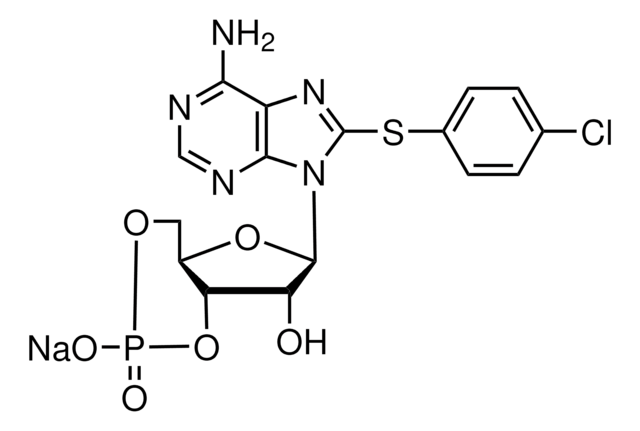
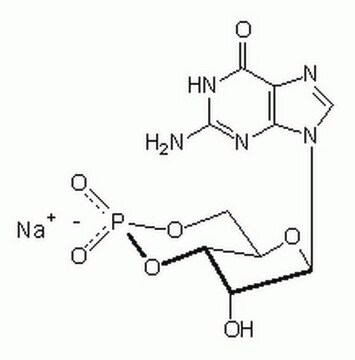
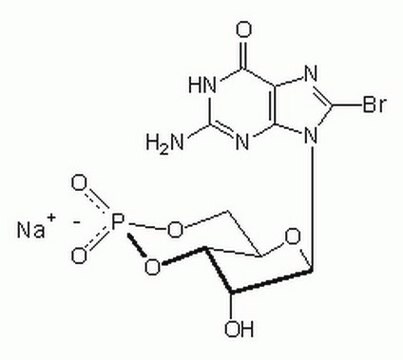


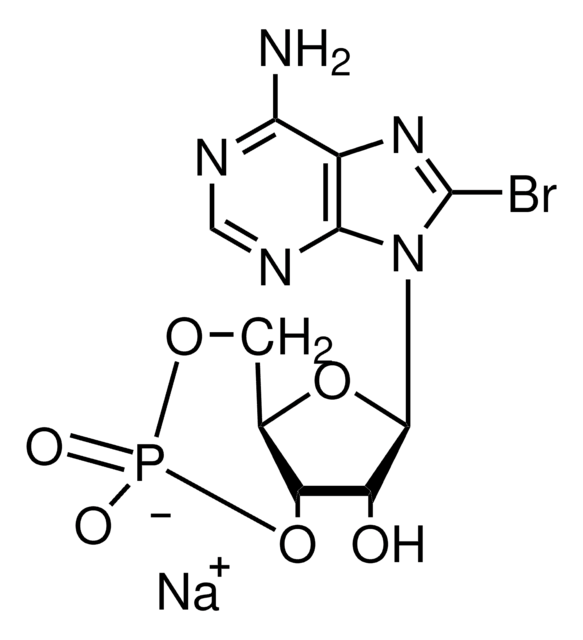


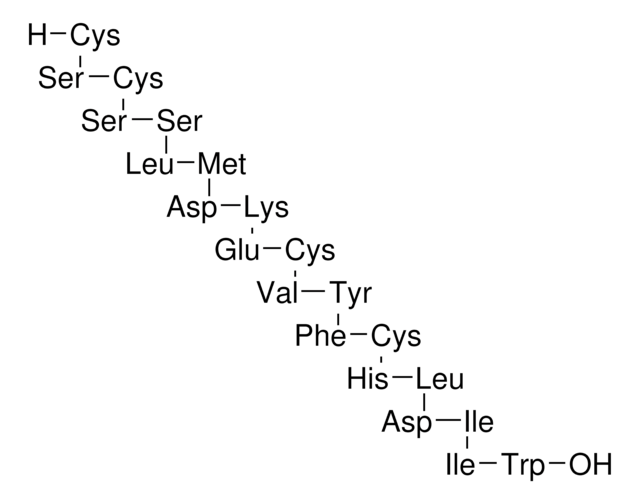
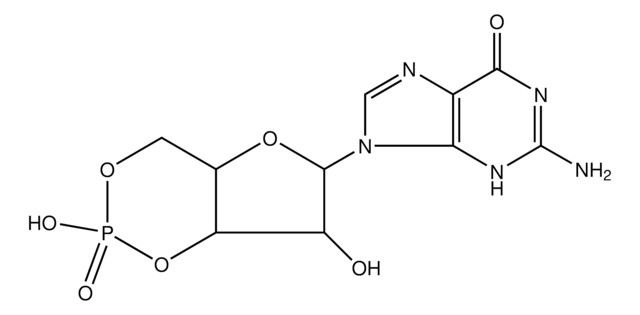
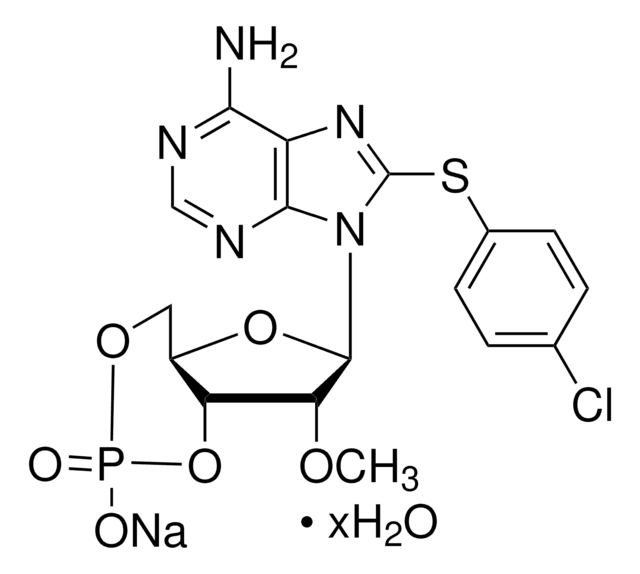

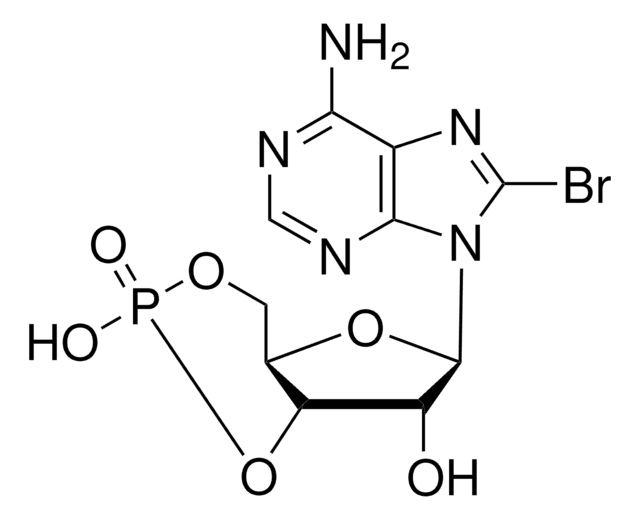
![[deamino-Cys1, D-Arg8]-Vasopressin acetate salt hydrate ≥95% (HPLC)](/deepweb/assets/sigmaaldrich/product/structures/215/222/82da3633-80ea-463d-8b55-e99fb8e442e0/640/82da3633-80ea-463d-8b55-e99fb8e442e0.png)